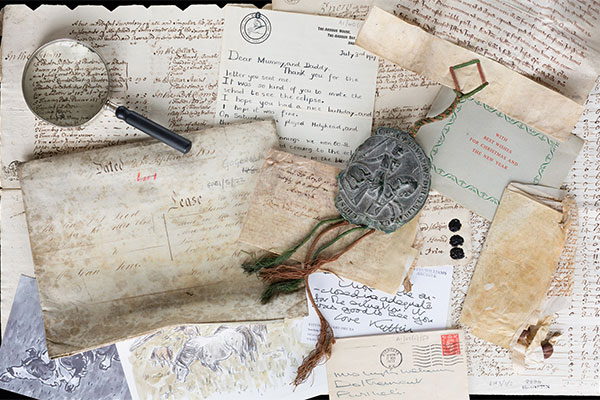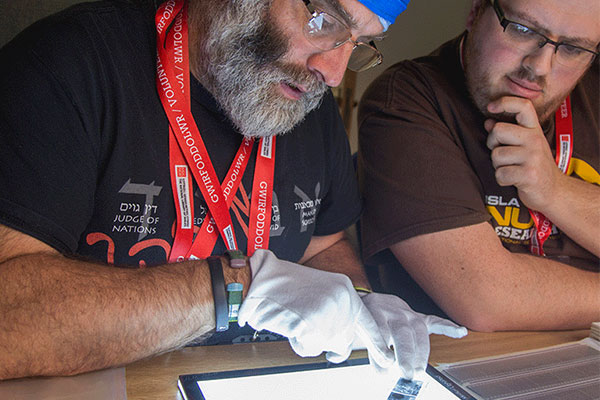The Music
The music in the manuscript is probably a selection for personal or family use and contains approximately 49 pieces of music for the lute, in a very neat but unknown hand. Matthew Spring, the author of The Lute in Britain: A History of the Instrument and Its Music suggests that the manuscript was created by an amateur but enthusiastic nobleman. It includes nine solos, 24 consort-song intabulations, 15 incomplete duets, and one trio. He also suggests that the solos and duets were 'old-fashioned' by 1595.
Most of the original titles used the cypher alphabet, but most of these were later deleted or hidden. A key to these codes can be seen in Robert Spencer’s introduction to 'The Brogyntyn Lute Book ...'. The subject of eight of the songs derives from 'The Paradyse of Daynty devises', a collection of poems by Hyder Edward Rollins. It also includes tabulations of 'Je file' by Philip van Wilder. Many of the other songs have interesting titles, such as ‘Ah, alas, you salt sea gods’, ‘In terrors trapped with thraldom thrust’ and 'Mistrust misdeems amiss’.
It is not the arrangement of the Brogyntyn pieces themselves that make this an important manuscript, but rather the evidence of the custom of freely intabulating music, both instrumental and vocal, for performances for voice and lute.
The music was copied after 11 July 1595, as piece No. 25 mentions Pilkington’s BMus degree, which was awarded to him on this date. Robert Spencer and Jeffrey Alexander state in their 'Brogyntyn lute book' that it is likely that all the music was copied in a relatively short period.




